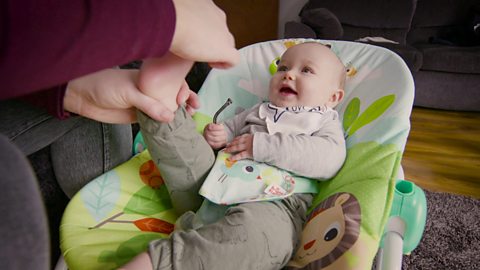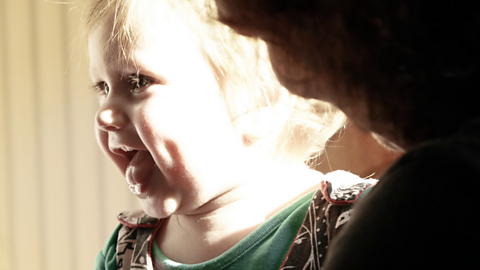Nursery rhymes are a fun way for your baby to learn new words.
Try singing The Wheels on the Bus and use actions to show your baby what different words mean, like 'wheels' for the bus and 'beep' for the horn.
Watch the short video below to refresh your memory if you've forgotten the tune.
The wheels on the bus go round and round
Round and round. Round and round
The wheels on the bus go round and round
All day long
The horn on the bus goes beep, beep, beep
Beep, beep, beep. Beep, beep, beep.
The horn on the bus goes beep, beep, beep
All day long
What do children learn from The Wheels on the Bus?
Singing nursery rhymes with babies and children is great for their language development.
When you sing Wheels on the Bus with your child, there are lots of opportunities to introduce new verses. This is a fun way to teach baby new words and actions that link to them.
Helping your baby to do the actions will improve their coordination and fine motor skills. As they get older, they'll be able to do more of them on their own.
Singing the song is a great way to teach children about the world around them and the language that comes with that. It's also a great one for encouraging imagination skills, as older children can make up lots of verses on their own.

The Wheels on the Bus lyrics
The wheels on the bus go round and round,
Round and round. Round and round.
The wheels on the bus go round and round,
All day long.
More verses to The Wheels on the Bus
There are so many fun ways to keep this song feeling fresh and to introduce your child to new words. We've included some of our favourite verses below:
- The horn on the bus goes beep, beep, beep
- The wipers on the bus go swish, swish, swish
- The money on the bus goes, clink, clink, clink
- The driver on the bus says "Move on back"
- The doors on the bus go open and shut
- Dogs on the bus go woof, woof, woof
- The babies on the bus go waa, waa, waa







